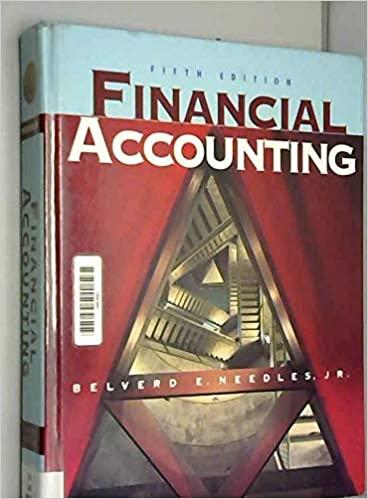Question
Please help me understand second and third portions of the problem... The solutions and text does not make sense to me.. if you could show
Please help me understand second and third portions of the problem... The solutions and text does not make sense to me.. if you could show math, that would be wonderful! Thank you!!



Requirement 1. Assume
Upper A minus OneAOne
Chicken classifies all five products as joint products. What are the ending inventory values of each product on July 31,
2017?
(Round your answers to the nearest cent. Enter an amount for each product including zero balances.)
| Product | Ending inventory value |
| Breasts | $4.01 |
| Wings | 1.05 |
| Thighs | 1.61 |
| Bones | 1.50 |
| Feathers | 0.21 |
| Total | $8.38 |
Requirement 2.
Assume TastyTasty Chicken uses the production method of accounting for byproducts. What are the ending inventory values for each joint product on July 31, 2017, assuming breasts and thighs are the joint products and wings, bones, and feathers are byproducts?
| Joint costs | - | NRV of byproducts | = | Joint costs to be allocated |
| - | = |
Now use the table below to calculate the allocated costs per pound for the breasts and thighs. (Round the weights to three decimal places, the joint costs to the nearest cent and the allocated costs per pound to four decimal places.)
|
| Breast | Thighs | Total |
| Pounds of product | |||
| Wholesale selling price |
|
|
|
| per pound |
| ||
| Sales value at splitoff | |||
| Weighting: Sales value |
|
|
|
| at splitoff | |||
| Joint costs allocated | |||
| Allocated costs |
|
|
|
| per pound |
|
What are the ending inventory values for each joint product on July 31, 2017, assuming breasts and thighs are the joint products and wings, bones, and feathers are byproducts? (Round all amounts to the nearest cent. Enter an amount for each product including zero balances.)
| Product | Ending inventory value |
| Breasts | |
| Wings | |
| Thighs | |
| Bones | |
| Feathers | |
| Total |
Requirement 3. Comment on differences in the results in requirements 1 and 2.
A.
Requirement 1 and 2 result in the same ending inventory value since there is no difference in allocating costs when there are byproducts.
B.
In requirement 1 joint costs are allocated to only the most profitable joint products. In requirement 2 all products, including byproducts, are allocated joint costs.
C.
In requirement 1 each product is allocated joint costs since each product is a joint product. In requirement 2 only breasts and thighs are allocated joint costs since the remaining products are byproducts.
D.
None of the above are true.
A-One Chicken grows and processes chickens. Each chicken is disassembled into five main parts. A-One Chicken is computing the ending inventory values for its July 31, 2017, balance sheet. Ending inventory amounts on July 31 are 10 pounds of breasts, 7 pounds of wings, 4 pounds of thighs, 10 pounds of bones, and 2 pounds of feathers. A-One Chicken's management wants to use the sales value at splitoff method. However, management wants you to explore the effect on ending inventory values of classifying one or more products as a byproduct rather than a joint product. (Click to view information on the sales value at splitoff method.) Read the requirements. Breast Wings Thighs Bones Total Feathers 5 100 30 50 65 250 $ 0.40 $ 0.15 $ 0.10 0.15 $ 0.40 $ 4.50 $ 20.00 $ $ 40.00 $ 9.75 $ 0.50 $ 74.75 Pounds of product Wholesale selling price per pound Sales value at splitoff Weighting: Sales Value at splitoff Joint costs allocated Allocated costs per pound 0.535 0.268 0.130 0.060 4.50 $ 0.007 1.000 0.53 $ 75.01 $ 40.13 $ 20.10 $ 9.75 $ $ 0.4013 $ 0.1500 $ 0.4020 $ 0.1500 $ 0.1060 1. 2. Assume A-One Chicken classifies all five products as joint products. What are the ending inventory values of each product on July 31, 2017? Assume A-One Chicken uses the production method of accounting for byproducts. What are the ending inventory values for each joint product on July 31, 2017, assuming breasts and thighs are the joint products and wings, bones, and feathers are byproducts? Comment on differences in the results in requirements 1 and 2. 3Step by Step Solution
There are 3 Steps involved in it
Step: 1

Get Instant Access to Expert-Tailored Solutions
See step-by-step solutions with expert insights and AI powered tools for academic success
Step: 2

Step: 3

Ace Your Homework with AI
Get the answers you need in no time with our AI-driven, step-by-step assistance
Get Started


